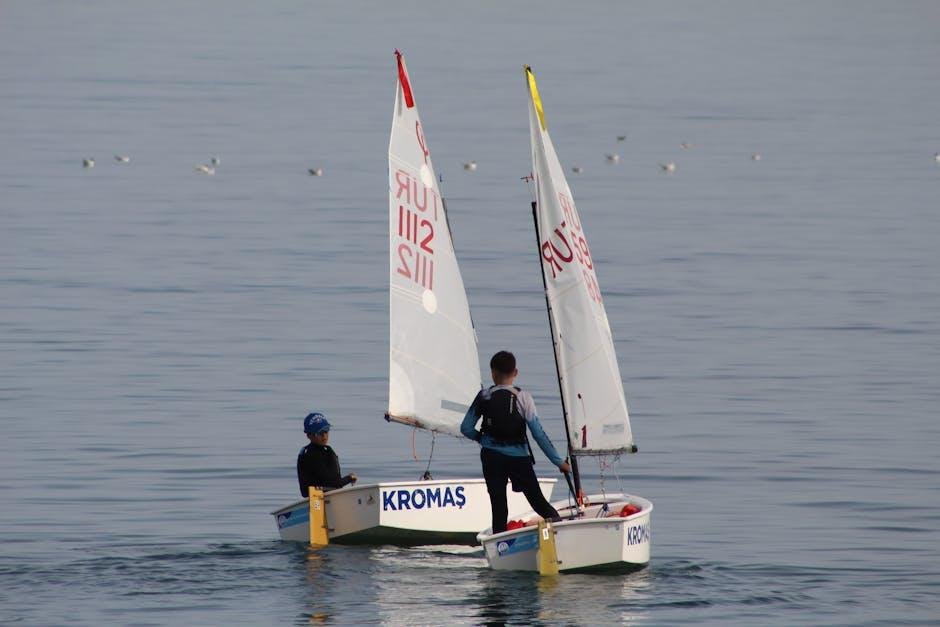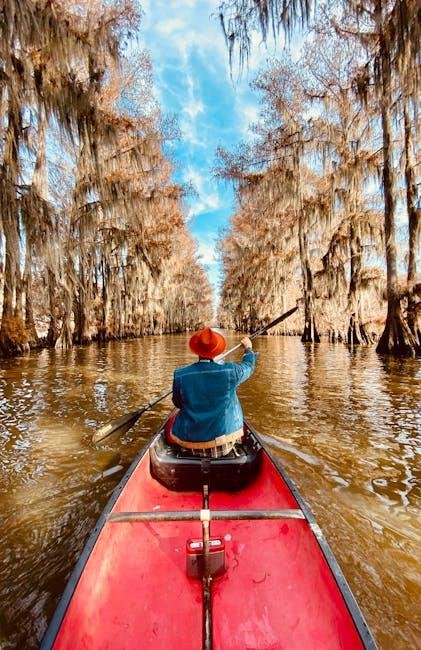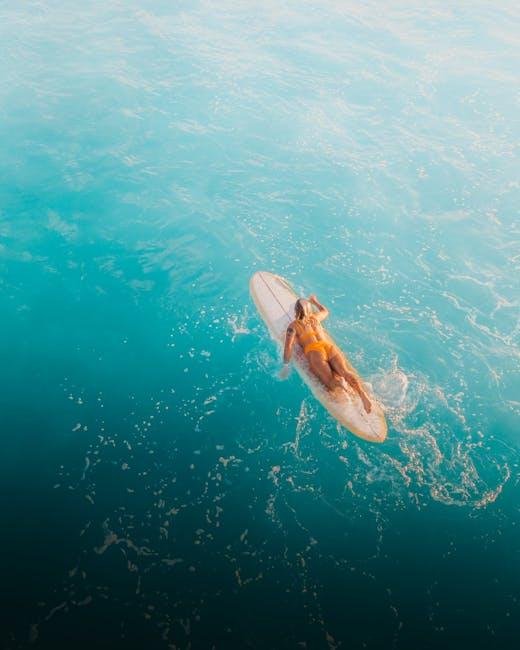Paddling Techniques for Long-Distance Trips: Mastering the Art of the Waterway
As the first rays of dawn pierce the tranquil surface of a pristine lake, a world of endless possibilities unfolds for those ready to embrace the adventure of long-distance paddling. From serene rivers snaking through ancient forests to expansive ocean coastlines whispering tales of exploration, the journey is not merely defined by the destination, but by the rhythmic dance between paddle and water. whether you are a seasoned voyager or a curious beginner, mastering the art of paddling is essential for ensuring that those miles drift by with grace and ease.in this article, we will delve into essential techniques that elevate the paddling experience, blending efficiency with enjoyment. We will explore the nuances of stroke mechanics, body positioning, and fatigue management, equipping you with the skills needed to navigate diverse waterways. So, steady your grip on the paddle, adjust your sights on the horizon, and join us as we unlock the secrets to paddling proficiency for unforgettable long-distance adventures.
Mastering Efficient Strokes for Endurance Paddling
To enhance your endurance paddling experience, mastering efficient strokes is essential. Focus on adopting a smooth and rhythmic paddling technique that minimizes energy expenditure while maximizing forward momentum.This involves engaging your core muscles, maintaining a relaxed grip on your paddle, and ensuring a proper body rotation.Key elements to incorporate into your strokes include:
- Grip and Paddle position: Hold the paddle lightly to prevent fatigue.
- Elbow Angle: Keep your elbows bent to reduce strain.
- Stoke Length: Opt for longer strokes at a slower pace to sustain energy.
A consistent cadence paired with the right techniques creates an efficient paddling style that conserves energy over long distances. Try to establish a breathing rhythm that aligns with your stroke cycle, allowing you to stay relaxed and focused. When paddling, consider integrating these tips into a cohesive practice schedule:
| Practice Focus | Goal |
|---|---|
| Core Strengthening Exercises | Improve overall stability while paddling |
| distance Drills | Build stamina and endurance |
| Paddle Technique Refinement | Perfect stroke mechanics |

Navigating Water Conditions: Adapting Your Technique
When embarking on long-distance paddling trips, understanding and adapting to water conditions is crucial for maintaining efficiency and safety. Choppy waters require a more dynamic paddling technique,often necessitating shorter,more purposeful strokes to retain control and stability. Conversely, in calmer waters, you can elongate your strokes and relax, allowing for a smooth and steady pace. it’s essential to remain vigilant and assess the environment continuously, being prepared to switch techniques as the conditions shift. The correct approach not only maximizes your energy output but also enhances the overall experience of your journey.
To better equip yourself for varying water conditions, consider these key strategies:
- Wind Direction: Always face into the wind when paddling to minimize resistance.
- wave Patterns: Paddle diagonally when confronting waves to maintain momentum.
- Current Awareness: Utilize downstream currents to conserve energy during long passages.
In addition, reviewing the following table can give you insight into effective paddling techniques suited for different water conditions:
| Water Condition | Recommended Technique |
|---|---|
| Choppy | Short, steady strokes |
| Calm | Long, fluid strokes |
| Strong currents | Side strokes for balance |

Building Stamina: Training Strategies for Long-Distance Paddlers
Building endurance for long-distance paddling requires a blend of physical training and strategic planning. start by incorporating cardiovascular workouts into your weekly routine to boost your overall stamina. Activities such as cycling, running, and swimming can enhance your aerobic capacity, allowing you to maintain a steady paddling pace for extended periods. Aim for at least three sessions per week, progressively increasing the duration and intensity.Additionally, integrating strength training focused on the upper body, core, and legs will bolster your paddling power and reduce fatigue during prolonged trips.
Equally crucial is optimizing your paddling technique to maximize efficiency. Focus on the following strategies:
- Posture: Keep a straight back and relaxed shoulders to avoid strain.
- Stroke Rhythm: Develop a consistent stroke rhythm to aid endurance—find a pace that feels enduring over time.
- Breathing Technique: Practice rhythmic breathing to maintain oxygen flow and energy levels.
- Interval Training: Combine high-intensity intervals with recovery periods while on the water to build stamina gradually.
| Training Focus | Frequency | Duration |
|---|---|---|
| Cardiovascular workouts | 3 times a week | 30-60 minutes |
| Strength Training | 2 times a week | 45-60 minutes |
| Interval Paddling | Once a week | 60 minutes |

essential Gear and Equipment for Comfort on Extended Journeys
When embarking on extended paddling journeys,the right gear can make all the difference in ensuring comfort and efficiency. Investing in quality equipment is essential, especially when facing unpredictable weather and varying water conditions. Key items to consider include:
- Agreeable Paddle: Opt for lightweight paddles that reduce fatigue and enable longer strokes.
- Well-Fitting PFD: A Personal Flotation Device that fits snugly can keep you safe and unobtrusive as you paddle.
- Dry Bags: Keep your clothing and gear dry with high-quality,waterproof storage solutions.
- Adjustable Seats: Enhance your comfort by selecting seats that provide excellent back support and can be adapted to suit your height.
- onboard Toiletries: Don’t forget essentials such as biodegradable soap and a portable toilet system for extended trips.
another pivotal aspect to consider is your clothing, wich can significantly impact your comfort during long hours on the water.Layering is key when dealing with fluctuating temperatures. A recommended wardrobe for your journey might include:
| Type | Purpose |
|---|---|
| Base Layer | Wicks moisture away, keeping you dry from sweat. |
| Insulating Layer | Retains body heat in cooler conditions. |
| Waterproof Shell | Protects against wind and rain to keep you dry. |
| Sun Protection | Use hats, UV shirts, and sunscreen to shield from harmful rays. |
insights and Conclusions
As you embark on your next long-distance paddling adventure, remember that mastering the art of paddling techniques is not just about reaching your destination but also about embracing the journey itself. Each stroke of the paddle is an invitation to connect with the water, the landscape, and your own limits. Whether you choose to glide across calm lakes or navigate winding rivers, the techniques discussed here will empower your experience, enhancing both efficiency and enjoyment.
Take the time to practice and refine your skills, and don’t forget the importance of pacing—both in speed and energy conservation.The beauty of long-distance paddling lies in the exploration and the evolution of your own abilities. As you refine your techniques, consider documenting your journey, sharing your personal insights, and appreciating the natural world around you.
So gear up, gather your essentials, and set your sights on the horizon. With knowledge and planning by your side, every adventure will be uniquely yours, filled with revelation and the simple joy of being one with nature. Happy paddling!
